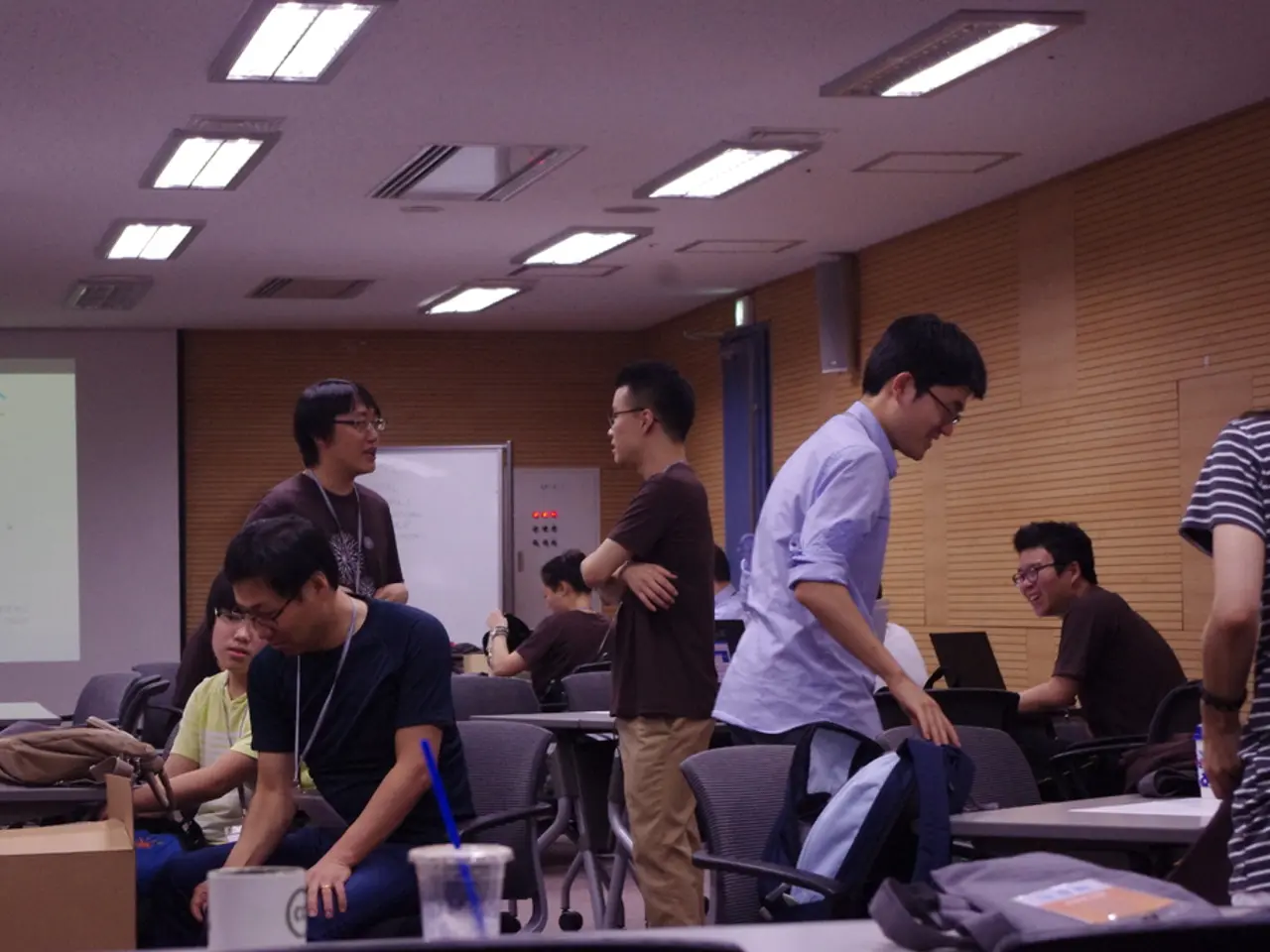Developing Expertise through Collaborative Learning Opportunities in the Workplace
Participatory Professional Development (PD) is revolutionizing educational training, with a focus on collaboration, active involvement, and shared learning among educators. This approach, which prioritizes inclusivity and leverages emerging technologies like VR and AI, is set to shape the future of teaching and learning.
Successful models of participatory PD include School-Based Professional Development (SBPD), Professional Learning Communities (PLCs), Collaborative Continuous Professional Development (CPD), and mentoring/coaching frameworks. These models emphasize collaboration, reflection, adaptation to career stages, and sustained engagement to be effective and sustainable.
School-Based Professional Development (SBPD)
SBPD offers structured, context-sensitive, and needs-driven opportunities such as targeted training, collaborative workshops, peer observation, and structured self-reflection. By aligning PD with teachers’ career stages through tiered mentoring, this model enhances professional learning communities, teacher retention, and instructional quality. Institutional support and policy alignment are crucial for embedding PD as an ongoing strategic process within schools.
Professional Learning Communities (PLCs)
PLCs involve educators working collaboratively through inquiry-based and results-oriented approaches. They focus on analyzing student learning data, developing common formative assessments, and sharing responsibility for student outcomes. Although challenges include shifting from isolated teaching to shared responsibility and aligning pacing and standards, PLCs have been shown to improve student achievement and teacher job satisfaction when effectively implemented.
Collaborative Continuous Professional Development (CPD)
Collaboration is foundational in CPD, including peer interactions, partnerships with universities, virtual communities, and interdisciplinary teams. Effective CPD programs foster structured group discussions, shared reflection activities, long-term sustained engagement beyond one-off workshops, and promote reflective practice (both individual and collective) to build professional agency.
Mentoring and Coaching
Tiered mentoring frameworks that adapt to teachers’ professional trajectories provide both individual capacity building and promote collaborative, innovative, and sustainable school cultures. For school leaders, flexible PD formats like executive coaching, peer learning communities, asynchronous modules, and regional cohorts help balance high-impact learning with time constraints, supported by progress tracking dashboards for continuous improvement.
Implementation principles for these models include context-sensitivity and need-based design, long-term, sustained engagement, collaborative culture, institutional and policy support, use of technology and community partnerships, and integration of technology in PD.
Technology facilitates communication among educators, enabling them to share experiences, insights, and strategies effectively through online platforms. Models of participatory PD include Peer Collaboration Models and Community of Practice Frameworks.
Evaluating the impact of participatory PD involves assessing both quantitative and qualitative outcomes, such as changes in teaching practices, student engagement, and overall educational performance. Digital tools like video conferencing software and collaborative applications enhance real-time interaction and feedback, promoting a more engaged learning environment.
Balancing time commitments poses a significant challenge for educators, as they often juggle numerous responsibilities. To address resistance to change, institutions may consider developing targeted training, creating flexible schedules, building a supportive culture, and endorsing systematic approaches.
Central to this approach are the principles of mutual respect and empowerment. Cooperative networks will likely be a hallmark of future participatory professional development strategies, establishing long-term partnerships among educational institutions, community organizations, and professionals.
Integration of technology in participatory PD expands its reach and allows for personalized learning journeys, accommodating various professional needs and preferences. Fear of inadequate support and ingrained habits can contribute to resistance to participatory practices. Technology enhances resource sharing through platforms designed for professional learning communities, allowing educators to curate and disseminate best practices.
In summary, participatory PD is most successful when it is collaborative, sustained, reflective, tailored to the professional stage and context of educators, and supported structurally by institutions through policies, leadership, and resources. Implementation involves creating opportunities for peer interaction, mentoring, data-driven inquiry, continued reflection, and leveraging flexible, accessible formats to meet diverse needs across educational institutions.
- Integrating e-learning platforms into Professional Learning Communities (PLCs) can offer educators opportunities for sustained, context-sensitive, and needs-driven learning, fostering the growth of personal-learning and education-and-self-development.
- Continuous Professional Development (CPD) can be further enhanced by incorporating technology, such as virtual communities, collaborative applications, and e-learning tools, promoting shared learning and reflective practice, which lead to personal-growth and improved instructional quality.




